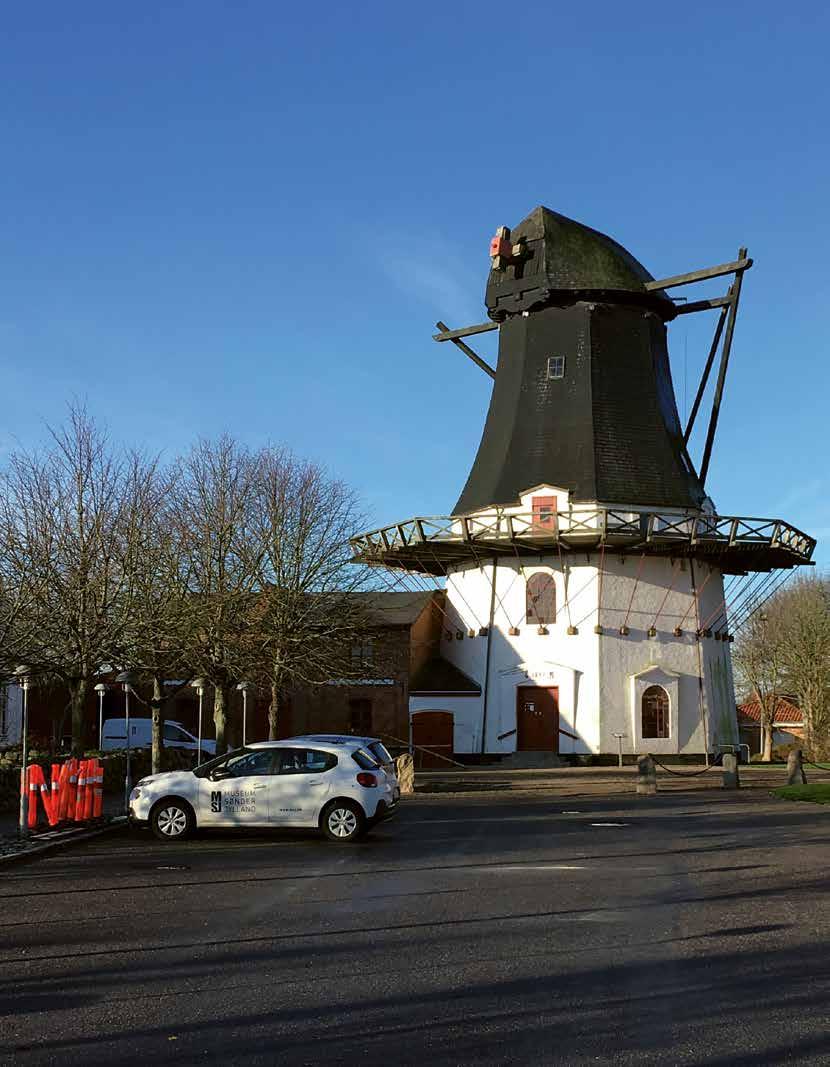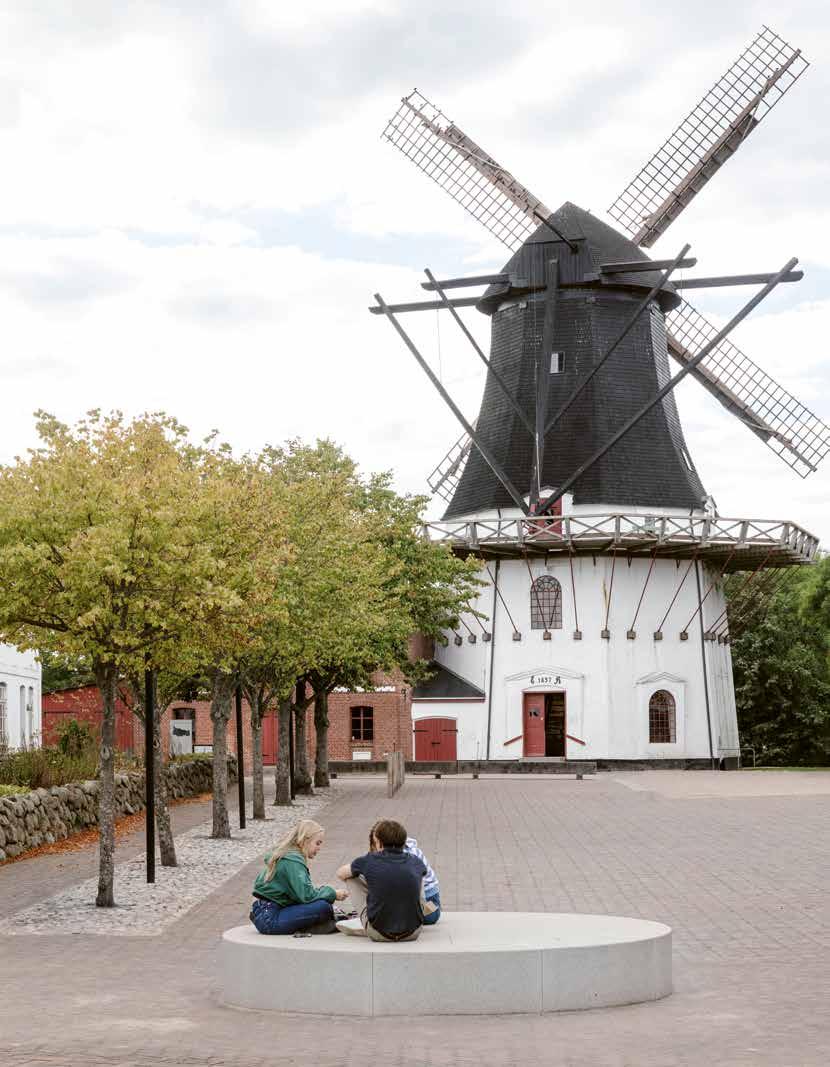
6 minute read
Facts Facts Facts
all with a particular interest in the area were represented. The Steering Group consisted of leading representatives of the municipality, local interests, tourism operators, business, utility and local and national foundations and philanthropic actors.
Overall, the organisation should support the six sub-projects in the partnership agreement:
1. Højer Byfond (grant for restoration of conservation houses)
2. Urban transformation Højer
3. Paths and routes
4. Climate adaptation River Vidå
5. Climate adaptationTønder Midtby
6. Business and Tourism Organisation
Each of the sub-projects set up development groups, which in cooperation with the steering group formulated practical objectives and activities in the actions. The development groups were each supported by a secretariat group which, in addition to municipal managers and staff, also included representatives from the contributors who had specific expertise to contribute knowledge and experience.
The sub-projects were supported by a cross-cutting analysis unit which could monitor developments across the sub-projects, drawing on a baseline measurement and continuous data collection from different data sources.
'The work process has been fantastic. I would say it has been democratic. There hasn't been an overriding relationship; everyone had a say, whether you were a local stakeholder or an expert from Realdania. Of course, there have been strays along the way. But everyone has been informed and involved in the decisions. And that's why virtually all the projects that came to fruition had a tailwind and support'. Keld I. Hansen, Deputy
Director,
'I think that our project design, with people from the organisation (the municipality, ed.) at the helm, has done a really good thing. It has been managers and heads of departments who have been project managers alongside their normal jobs. It has brought integrity into our own organisation. Typically you have a project design situated completely outside the municipality, which can create some conflict. We haven't had that here'.
Lars-Erik Skydsbjerg, Head of Technology & Planning, Tønder Municipality and Project Manager, Tøndermarsk Initiative
Important victories along the way
'Our most important victory has probably been that we have achieved 98.7% of our objectives, with the quality we set out to achieve and with the budget we had allocated. That fact that we succeeded with so many participants and the many challenges'. Keld I.
Hansen, Deputy Municipal Director, Municipality of Tønder and Project Director, Tøndermarsk Project
The municipality also points to three successful process interventions that stand out:
• Bridging conflicting interests.
• The municipality acting as a network generator.
• Co-creating with members of the public.
The municipality developed its skills as a network generator, facilitating interaction between different agents, foundations and members of the public. All those involved felt that the solutions arrived at were better and more sustainable in the long run, even though it was difficult and time-consuming to get there. General public support for the municipality's arrangements and decisions was strengthened by ensuring broad ownership and acceptance.
Members of the public and the municipality had positive experiences of co-creating new initiatives, not least that it paid off. Responsibility was shared with the people. For example, an association was formed to help people restore houses worthy of preservation, and local 'path guilds' were established and involved in developing the new paths in the Tøndermarsken.
'We made a point of communicating that we were opening a trial version of the path, so that all interested citizens had the opportunity to comment on whether it felt right or whether anything needed to be changed. Not much was changed, but it was important for them to have a say'. Maria
Lottrup, Project Coordinator, Tøndermarsk Project
Key challenges
• Members of the public and activists became impatient when they felt that processes were taking a long time and lacked momentum. Despite strong support for 'getting there' to be developed together, involving all participants, people were surprised that no one could tell them what was going to happen. 'We don't want any more post-its and talk'.
• Communicating the project to local people in a way that informed and involved them, and ensuring that the project was widely known and created a sense of shared ownership. It was not enough to hold public meetings and show posters.
• Co-creation and interdisciplinarity have been challenging for public officials; it has sometimes meant compromising professional insights and letting other people's ideas come to the fore.
Value for stakeholders in the partnership
The Tøndermarsk Initiative has lifted an area that is vulnerable in every way by means of a well-thought-out, holistic approach with a number of mutually effective sub-projects. It is supported by funding form several sources and has resulted in a number of actual, physical improvements in and around Højer, including urban transformation and landscape development a well-functioning, balanced partnership which has provided Tønder Municipality with important experience and new skills for project development that can be translated into other projects. The people of the area have experienced a renewed pride and confidence in their local community. A new, vibrant narrative about Tøndermarsken has been created.
Before and after restoration of Højer Mill. One of many actions in the transformation of Højer as part of the Tøndermarsk Initiative.

Essential learning
The close cooperation with the philanthropic and local partners in the sub-projects required considerable resources, but was, according to the municipality, an important reason for success of the project, because it strengthened knowledge sharing, ownership, professionalism and competence building, not least in the field of project development, which has in fact supported the work of Tønder municipality in similar contexts.
The ongoing dialogue with local people, and the inclusion of their views and wishes - including finding the best way to communicate - has been a challenging and time-consuming process. However, as a result, local people today express enthusiasm and support for the changes that have been brought about in their community.
When working on development of a place, it is important to understand the potential of places as more than geography, more than the nature surroundings and buildings of an area. It is people who unlock the potential, which is why it is so important to spend time and resources building collaboration and trust.
'The Tøndermarsk Initiative has shown the value of working long-term and dynamically. When there are many people involved and lots of different things going on over a long period of time, and it's all complex and difficult, it is important to stick to the strategy and the long haul. But at the same time it's alright to try, fail and make adjustments along the way. That's where I think philanthropic partners can play an important role'.
Stine Lea Jacobi, Programme Manager, Realdania
The communication effort rather fell between two stools by wanting to address both residents and tourists. That was a mistake. Project communication to local people should have been more prominent in the early stages to mobilise local support and commitment to the special nature, architectural culture and people of the Tøndermarsken. In general, communication needs to be prioritised in terms of the right skills and resources.
Results
'I've lived here since 2008, a newcomer. When we came here, I was greeted by 'what are you doing here?'. Those who lived here were probably happy with their home, but they felt that everything around them was being dismantled and they had been left behind. That has changed, but Rome wasn't built in a day. The hotel has reopened, there are two cafés and an ice cream parlour. Although there are still challenges and it can be difficult to start a business while large parts of the town are being dug up, the mood has turned and people are taking a chance. And Højer has become an attractive place to buy a house. Five years ago there were 50 houses for sale, today there are almost none'.
Anne Marie Ludvigsen, Curator, Museum Sønderjylland
'The town has been given a boost and interest in our town as well. We have holiday apartments ourselves and meet many visitors. And then we tell them what's going on. That Højer is the gateway to the Tønder marshes and everything else. They are amazed by what is happening. What interests them most is that the town is being raised to a new level and old buildings not just demolished as in other large European cities. No. Here you preserve and carefully restore them'.

Keld Nielsen, Director, LIFETIME, Højer
The interviews and data from the monitoring of the Tøndermarsk Initiative indicate that the negative trend and the mood among the many inhabitants of the area have been reversed. There is development, prosperity and renewed interest in living in, working and visiting the area. The owners of over 150 listed and conservation houses in Højer have restored their properties with the support of the Højer Town Fund. At the same time, the historic part of Højer has been transformed with respect for the distinctive local building culture. The overall result is attractive urban spaces that invite both locals and visitors to stay. Climate action has also been strengthened. The northern part of the Tøndermarsken will be transformed into a nature area with the support of a number of Danish nature foundations and the EU, which will also act as a 'car park' for water and safeguard the towns in the area against future climate events.
'Even a peripheral municipality - and we recognise that that is what we are - has a remote area, which is what we were. Before we started the project, people came and handed in the keys to their houses because they couldn't get them sold. So we tore down houses and tore down houses. We don't do that anymore. Now they're being sold - and at a reasonable price. When I talk to young people out in the area, they tell me that now they believe in a future here'.
Keld I. Hansen, vicekommunaldirektør, Deputy Municipal Director, Tønder Municipality, Project Director, Tøndermarsk Initiative






